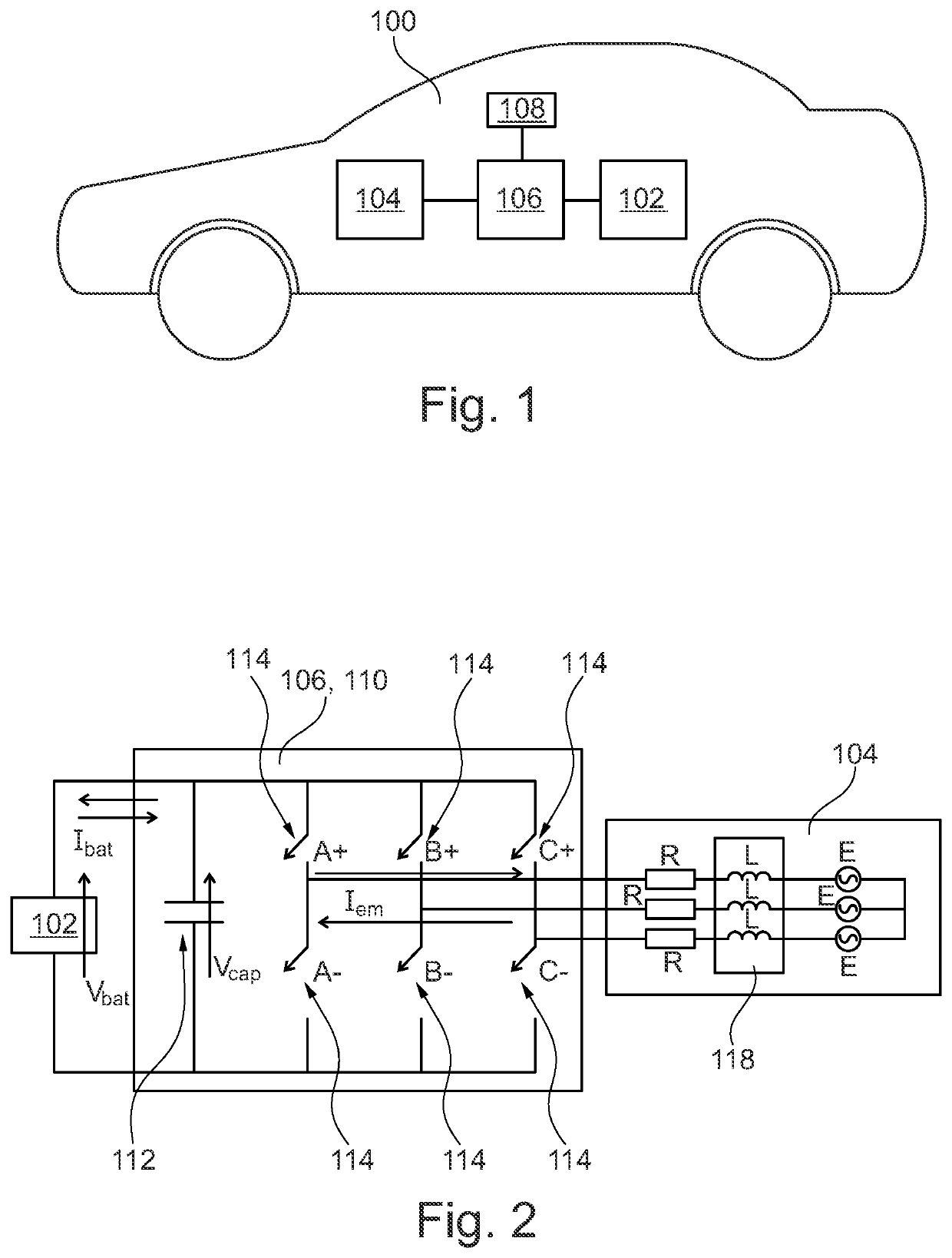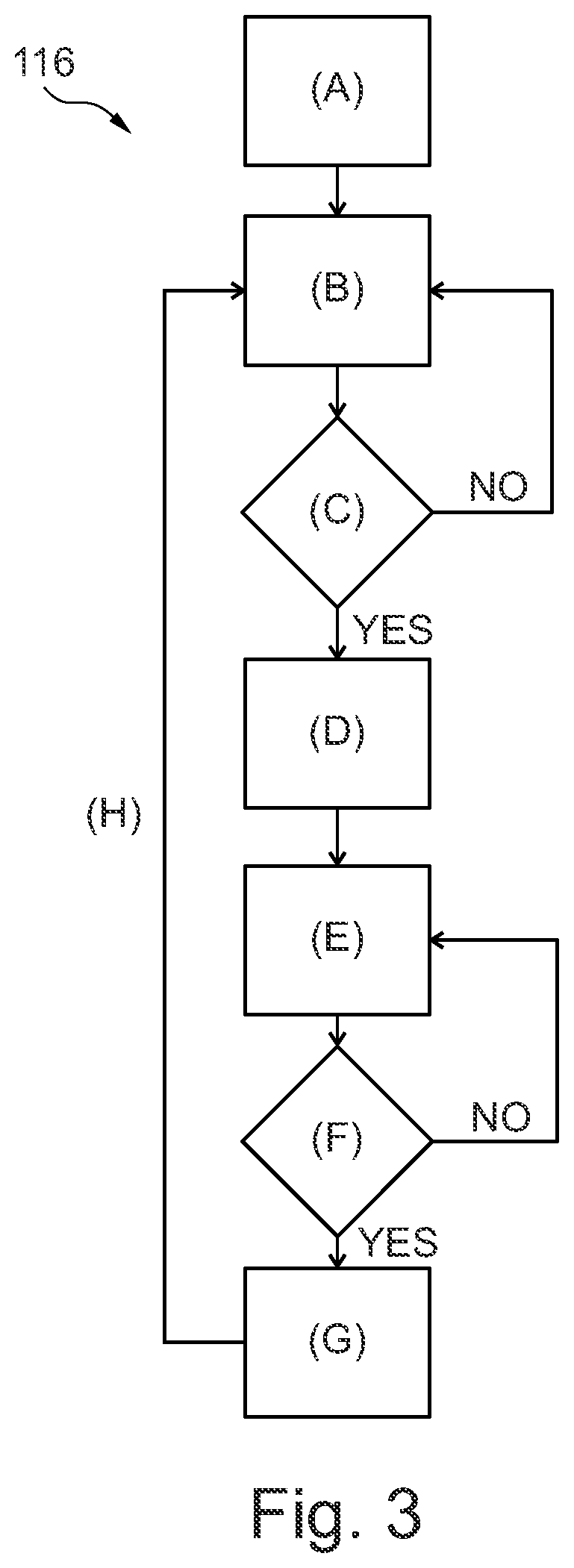Method for heating a battery in a vehicle and vehicle
a battery and vehicle technology, applied in battery/fuel cell control arrangement, secondary cell servicing/maintenance, electrochemical generators, etc., can solve the problems of low efficiency of cold batteries, loss inside the battery heats the battery, and the battery is not 100% efficien
- Summary
- Abstract
- Description
- Claims
- Application Information
AI Technical Summary
Benefits of technology
Problems solved by technology
Method used
Image
Examples
Embodiment Construction
[0056]FIG. 1 shows an embodiment of a vehicle 100 in a schematic illustration. In this embodiment, the vehicle 100 may be a battery electric vehicle (BEV) 100 and comprises a battery 102, and an electric machine 104. Alternatively, the vehicle 100 may be also a hybrid electric vehicle (HEV) or a plugin hybrid electric vehicle (PHEV).
[0057]In this embodiment, the electric machine 104 may be a propulsion motor of the vehicle 100 and the battery 102 may be a traction battery of the vehicle 100. The battery 102 corresponds to an electrochemical energy storage device capable of storing energy for a long-term period. Further, the battery 102 is configured to provide energy to the electric machine 104 for propelling or driving the vehicle 100. The electric machine 104 as the propulsion motor is configured to convert the energy provided by the battery into mechanical power for driving the vehicle 100.
[0058]The battery 102 is connected to the electric machine 104 via a power electronic conve...
PUM
| Property | Measurement | Unit |
|---|---|---|
| energy | aaaaa | aaaaa |
| electromagnetic field | aaaaa | aaaaa |
| electrostatic field | aaaaa | aaaaa |
Abstract
Description
Claims
Application Information
 Login to View More
Login to View More - R&D
- Intellectual Property
- Life Sciences
- Materials
- Tech Scout
- Unparalleled Data Quality
- Higher Quality Content
- 60% Fewer Hallucinations
Browse by: Latest US Patents, China's latest patents, Technical Efficacy Thesaurus, Application Domain, Technology Topic, Popular Technical Reports.
© 2025 PatSnap. All rights reserved.Legal|Privacy policy|Modern Slavery Act Transparency Statement|Sitemap|About US| Contact US: help@patsnap.com


